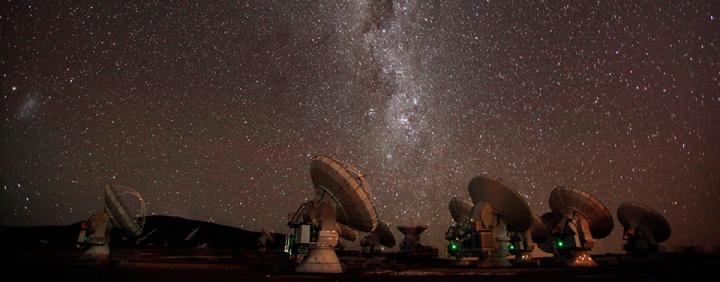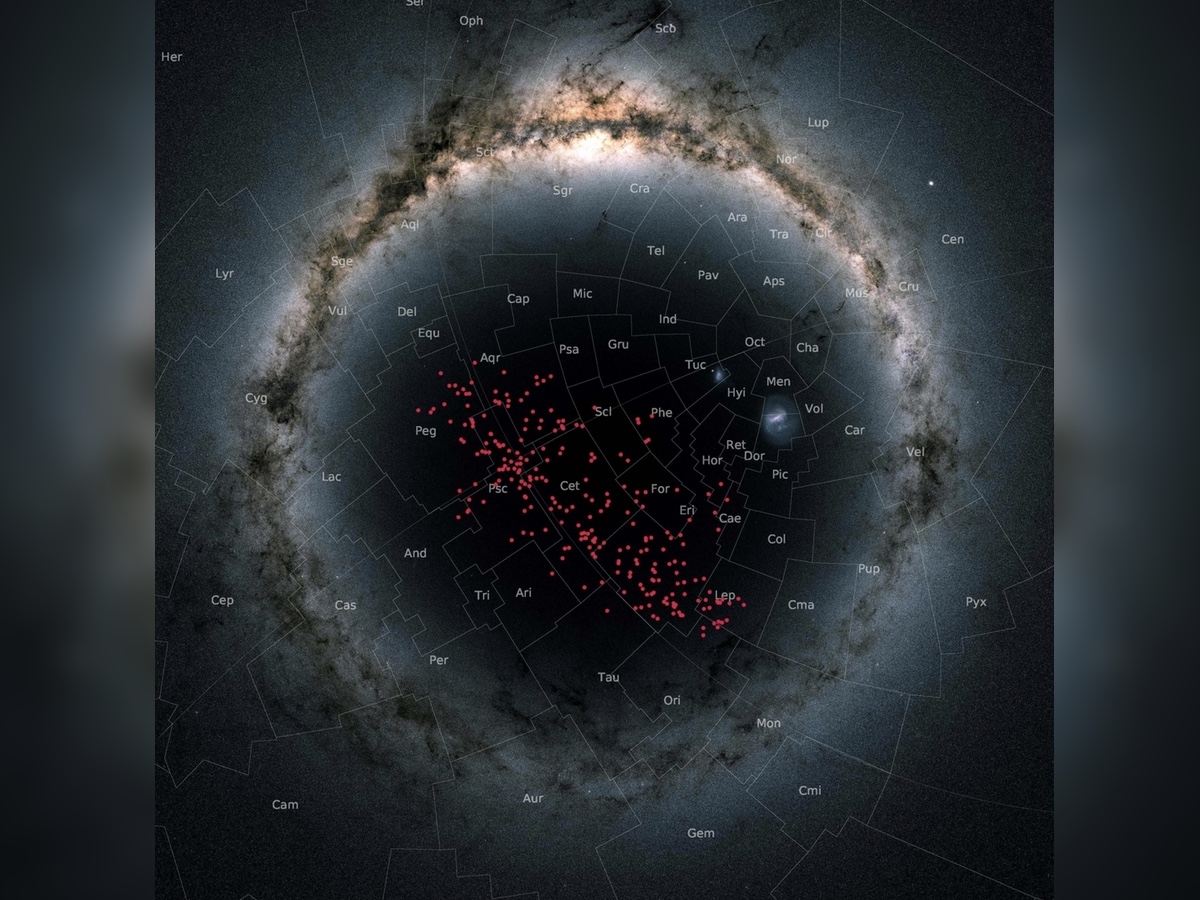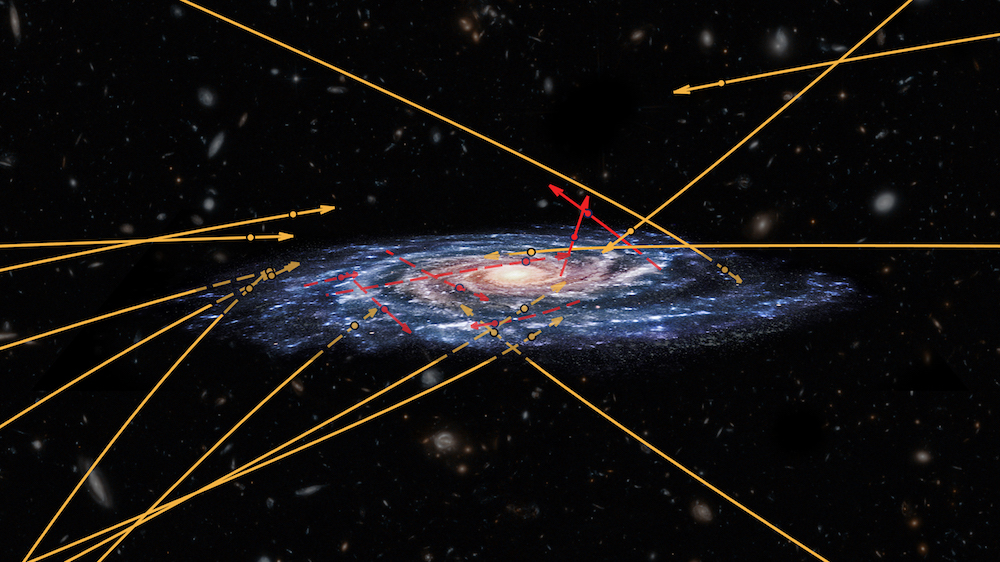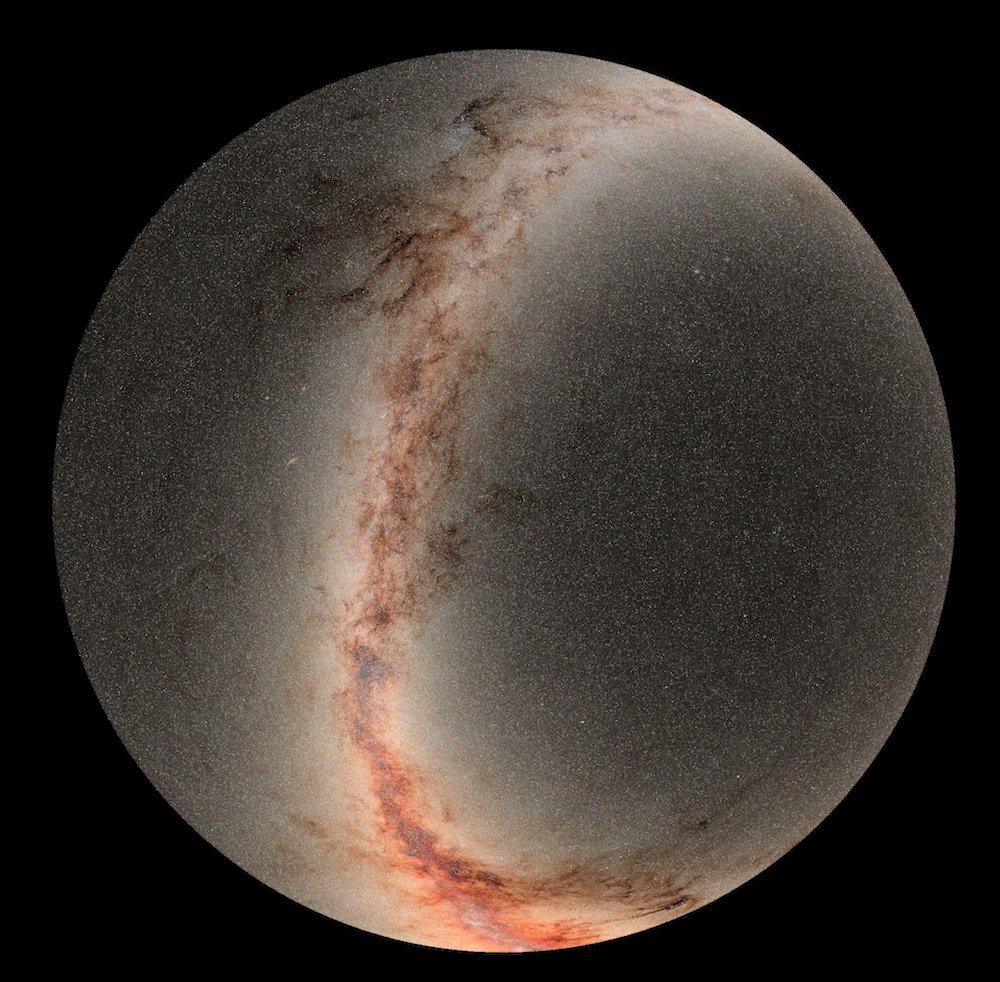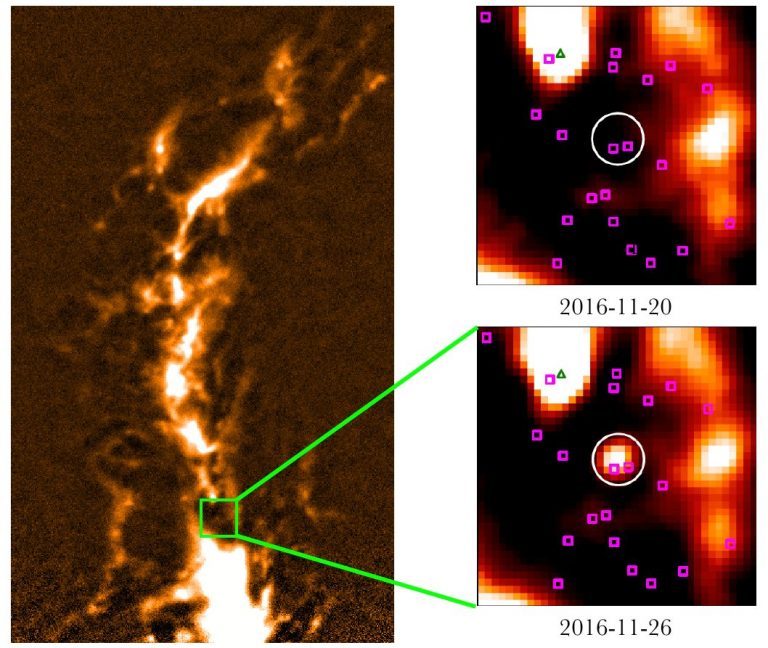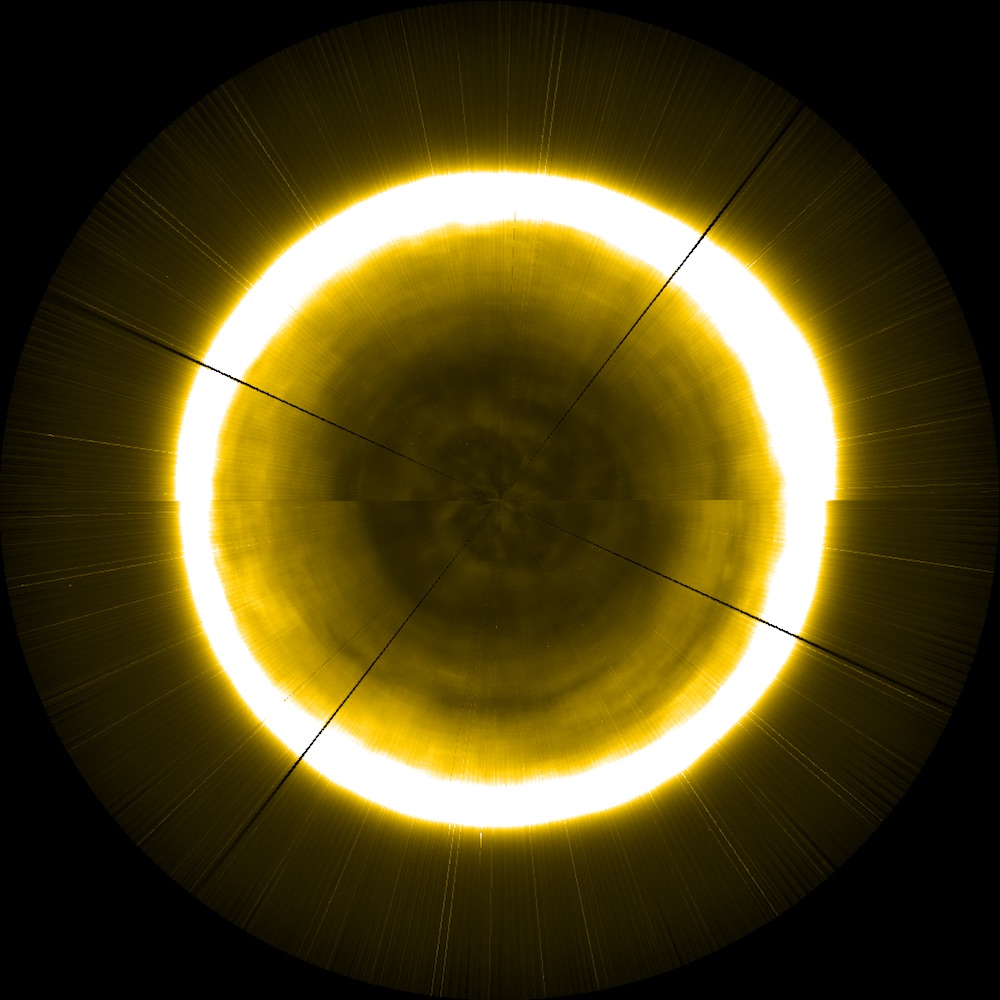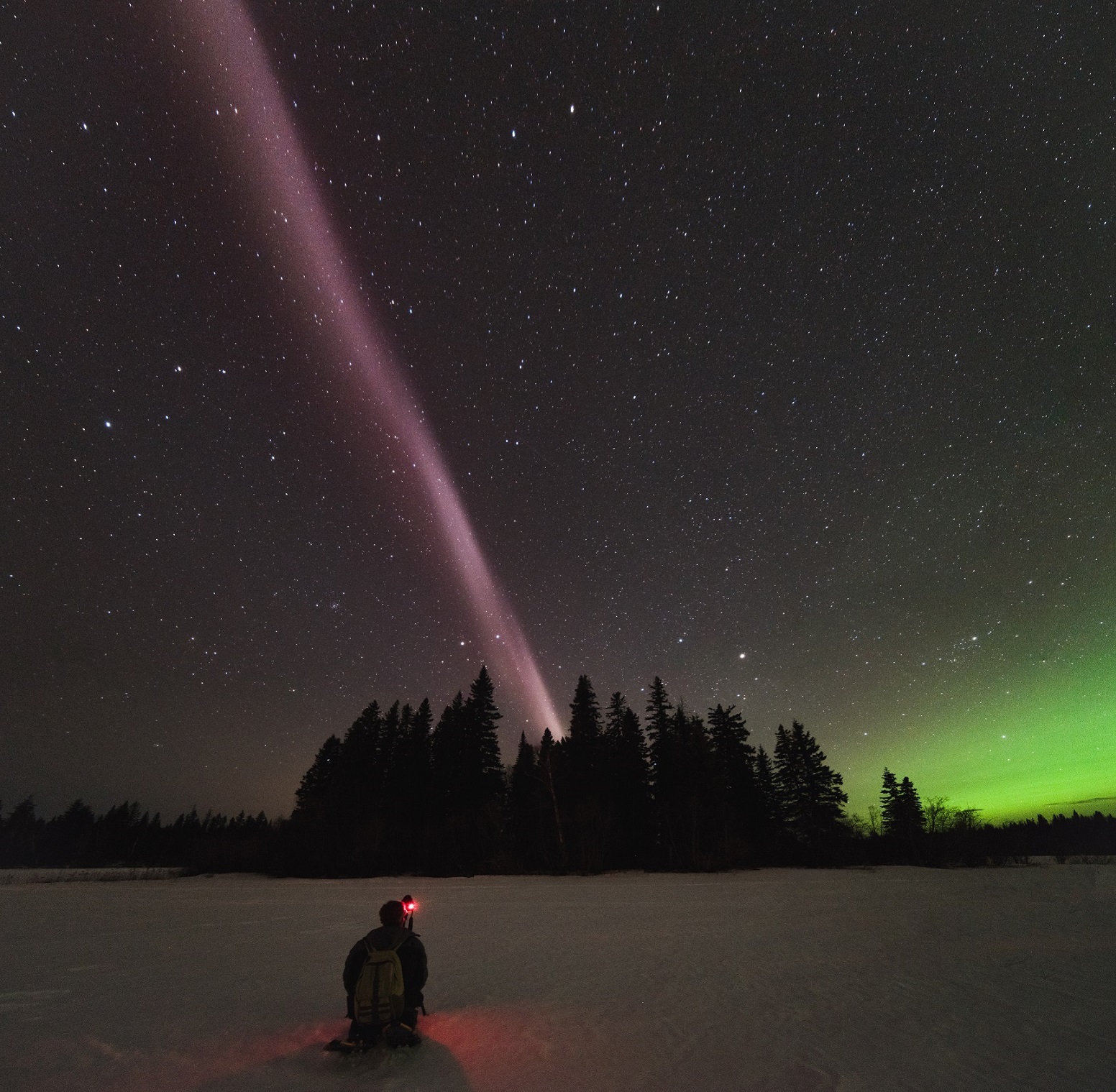Introduction
Since the dawn of humanity, people have looked to the sky and marveled at the glittering lights above. With the advent of modern telescopes, scientists came to understand the intricacies of stellar evolution and how these great balls of fire live, grow and die. More often than not, their research produces spectacular images of stars and their related phenomena that invoke awe and wonder. In this gallery, we take a look at some of the best examples from recent years.
River of stars
A river of stars 1,300 light-years long and 160 light-years wide winds through the Milky Way in this incredible photo. Made using the European Space Agency's (ESA) 3D-mapping Gaia satellite, the image shows a stellar stream (in red) that was hidden to astronomers before the mission's launch.
Hidden beauty
This beautiful image reveals something about our friendly neighborhood star that is otherwise invisible to human eyes — magnetic field lines emerging from our sun. Created by NASA's Solar Dynamics Observatory, the snapshot is made using computer models that capture the unseen solar energy responsible for flares and other space weather events.
Hypervelocity stars
A schematic shows 20 hypervelocity stars racing toward our galaxy at millions of miles per hour. Even crazier? These stars appear to be foreign renegades flung toward the Milky Way from a distant galaxy by an unknown process.
Jiggling space bubbles
The galaxy NGC 3079, located 67 million light-years from Earth, is blowing bubbles. Seen here in X-rays and optical light, the spherical structures are formed when powerful shock waves shove gases released by stars far into space. It's possible that these bubbles are sending highly energetic cosmic rays in the direction of Earth.
The entire sky
Four years of observations went into making this amazing all-sky map, which features the disk of the Milky Way slashing through its center and more than 800 million stars in total. Made using data from the Pan-STARRS observatory in Maui, Hawaii, the map represents one of the biggest astronomical data releases of all time—1.6 petabytes of data (1.6 million gigabytes), or the equivalent of about 2 billion selfies.
Editor's Note: This article was corrected to note that 1.6 million gigabytes is equal to 1.6 petabytes, not 1.6 billion petabytes.
Get the world’s most fascinating discoveries delivered straight to your inbox.
Eta Carinae
One of the most bizarre beasts in the night sky is Eta Carinae, a star so massive and bright that its own photons are puffing up its outer layers into an odd, hourglass shape. This image, taken with the European Southern Observatory's Very Large Telescope, shows the bipolar structure as well as jets coming out from the central star.
Orion's belt
In the sword of the constellation Orion, some 1,500 light-years away from Earth, a star blasted out a flare of plasma and radiation 10 billion times more powerful than any ever seen coming from our sun. The explosion was captured by the James Clerk Maxwell Telescope on Mauna Kea in Hawaii, and can be seen in the area inside the white circle on the right, when the star briefly became brighter than almost anything around it.
Massive star and tiny twin
This artist's impression features a young star named MM 1a in a star-forming region of the galaxy more than 10,000 light-years away. When astronomers zoomed in closer to the object, they found a surprise: a smaller stellar sibling, formed from the spray of dust and gases surrounding MM 1a.
Solar north pole
This composite image of the sun's north pole was taken over several days using ESA's Proba-2 satellite, which monitors space weather. At the top you can see a dark vortex bubbling around the pole's center. This is a coronal hole — a thin, colder region on the sun's surface that is more likely to eject blisteringly fast high-energy particles into space.
Call me STEVE
In July of 2016, skywatchers were treated to a strange phenomenon named STEVE. Most people originally thought it was a rare manifestation of ordinary auroras, in which the charged particles flung by the sun toward Earth interact with our planet's magnetic field in a glorious riot of color. But a study later found that STEVE does not contain the telltale traces of charged particles blasting through Earth's atmosphere that auroras do. The enigmatic STEVE — which stands for Strong Thermal Emission Velocity Enhancement — is still largely unexplained.
Originally published on Live Science.

Adam Mann is a freelance journalist with over a decade of experience, specializing in astronomy and physics stories. He has a bachelor's degree in astrophysics from UC Berkeley. His work has appeared in the New Yorker, New York Times, National Geographic, Wall Street Journal, Wired, Nature, Science, and many other places. He lives in Oakland, California, where he enjoys riding his bike.


